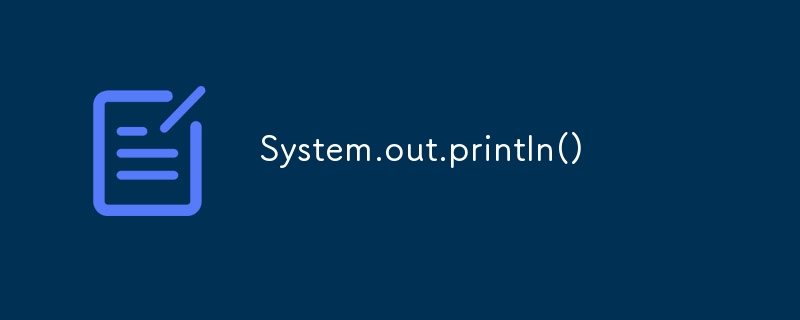Home >Java >javaTutorial >System.out.println()
System.out.println()
- Susan SarandonOriginal
- 2025-01-07 20:41:46552browse

What Is System.Out.Println in Java?
To define System.out.println() in Java, it is a simple statement that prints any argument you pass and adds a new line after it.
*println() is responsible for printing the argument and printing a new line
*System.out refers to the standard output stream
*The statement System.out.println contains three major parts: System, out, and println.
*System refers to a final class that we can find in the java.lang.package(TBD)-(https://www.geeksforgeeks.org/java-lang-package-java/) and this System class has a public and static member field called PrintStream.
*All instances of the class PrintStream have a public method called println()
*out is an instance(உதாரணம்) of the PrintStream class
The structure of the statement System.out.println(), being in line with the standards, reflects all these relationships.
System.out.println() Syntax in Java
System.out.println(argument);
Reference:https://interviewkickstart.com/blogs/learn/system-out-println-in-java
How to call static method or variable of class in java ?
static method or variable can be access using class name.
The above is the detailed content of System.out.println(). For more information, please follow other related articles on the PHP Chinese website!

